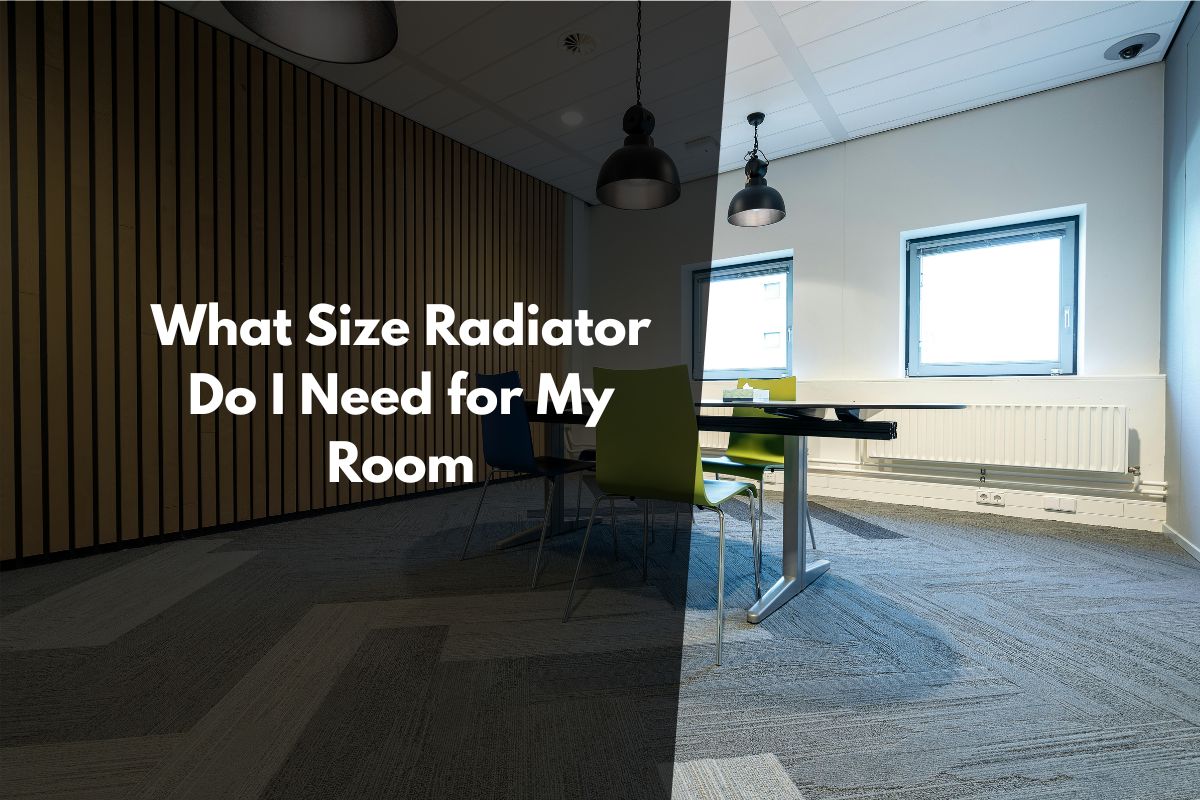Available 10am-4pm via message/ email

What Size Radiator Do I Need for My Room
Getting the right radiator size is also vital to creating a warm and energy-efficient home. When renovating or looking to replace an old radiator, the question “what size radiator do I need for my room?” At least one of these are more critical than you might think. This guide takes you through how to calculate the ideal radiator size using BTU (British Thermal Unit) and exactly what you need to consider including room dimensions, insulation and radiator types including ElectriCast, designer radiators and tall wall traditional radiators.
Importance of Selecting the Correct Radiator Size
Choosing the appropriate radiator size enables efficient heating of your space. If your radiator is too small it will not adequately heat your space but an oversized radiator will waste energy and cause overheating. The heating requirements of each room are determined by its size and shape together with insulation quality and the number of external walls.
Benefits of Consulting Heating Professionals
Online resources provide valuable information but heating experts deliver customized solutions. They’ll consider things like:
-
Selecting the ideal valve type for your radiator system
-
The most suitable designer radiator model
-
A tall wall radiator or compact option should be chosen based on your requirements.
-
Pipework compatibility and placement
Understanding BTU (British Thermal Unit)
BTU is the standard measurement for heat output in radiators. The higher the BTU, the more heat and warm radiator can produce. Calculating your room's BTU requirement helps determine what size radiator is needed.
BTU is influenced by:
-
Room dimensions (length × width × height)
-
Number of windows and doors
-
Insulation level
-
Room purpose (living room vs. bathroom)
The British Thermal Unit represents the standard metric for determining heat production from radiators. A radiator produces more heat when it has a higher BTU rating. Your room's BTU requirement calculation allows you to select the appropriate radiator size.
BTU is influenced by:
-
Room dimensions (length × width × height)
-
Number of windows and doors
-
Insulation level
-
Room purpose (living room vs. bathroom)
Factors Influencing Radiator Size Selection
Before chooses your radiator you need to measure and take into account several factors.
1. Room Dimensions
To find the total cubic meter volume of the room measure its length, width and height.
2. Insulation Quality
Poorly insulated rooms need higher BTU. The heating needs decrease when rooms feature double-glazed windows alongside insulated walls.
3. Room Type & Location
Living rooms that face the south side of a building usually require less heating compared to bedrooms positioned on the north side. Due to the presence of appliances and moisture levels kitchens and bathrooms require different heating solutions.
4. Window Area
Consider the heat loss from large windows and patio doors when calculating the necessary BTU.
Calculating Required Heat Output (BTU)
You can use the following formula for a basic estimate:
Room Volume (m³) × BTU Factor = Required BTU
|
Room Type |
BTU Factor (per m³) |
|
Well Insulated |
45–50 |
|
Average |
55–60 |
|
Poorly Insulated |
65–75 |
Example: A 4m × 3m × 2.5m room = 30m³
30 × 55 = 1,650 BTU
Bonus Tip: Always add 10–20% extra BTU to cover heat loss from windows and doors.
Radiator Size Chart (BTU vs. Dimensions)
|
BTU Required |
Approx Radiator Size (mm) |
Room Type Example |
|
1,000 – 1,500 |
600H x 600W |
Small Bathroom |
|
1,500 – 2,500 |
600H x 800W – 1000W |
Small Bedroom |
|
2,500 – 4,000 |
600H x 1200W – 1400W |
Living Room |
|
4,000+ |
Tall Wall Radiator / Double Panel |
Large Lounge |
➡ For compact areas, tall wall radiators or vertical designer radiators offer high output with minimal floor space.

Choosing the Right Radiator: Additional Considerations
-
ElectriCast Radiators present electric heating solutions while maintaining the traditional cast iron appearance making them perfect for renovation projects.
-
Select the right valve for your radiator to properly manage both temperature and flow rate.
-
Measure your wall space with precise measuring tools to confirm that your radiator fits properly.
FAQs
How important is radiator size?
Very. The wrong size can result in underheating or wasted energy. Accurate sizing ensures efficiency, comfort, and cost savings.
How to choose the right size radiator?
Measure your room, calculate the BTU requirement, and consult a radiator size chart. Consider insulation, windows, and room use.
What is the benefit of a larger radiator?
A larger radiator can heat a room faster and may run more efficiently at lower temperatures. However, oversizing can cause overheating and inefficiency.
Is a thicker radiator better?
Thicker radiators (like double panel models) usually provide more output than single panels, making them ideal for larger or colder rooms.
What are the benefits of tall radiators?
Tall wall radiators are perfect for small rooms with limited horizontal space. They’re stylish, space-saving, and often found in designer radiator collections.
Will a bigger radiator help with overheating?
Not always. A larger radiator may overheat the room if not correctly sized. Use a thermostatic valve and BTU calculator to find the balance.
Final Thoughts
You might be wondering, “what size radiator do I need for my room? — as the great Balanced Master once said: balance, balance, balance. Choose the right BTU, know how to measure right, be conscious of insulation and the right products (with ElectriCast or designer radiators) can give heating beauty and function.
Use a radiator BTU calculator and our guide to radiator sizes to get started — and when in doubt, talk to a heating professional to ensure your radiator is the perfect fit for your room’s needs.
